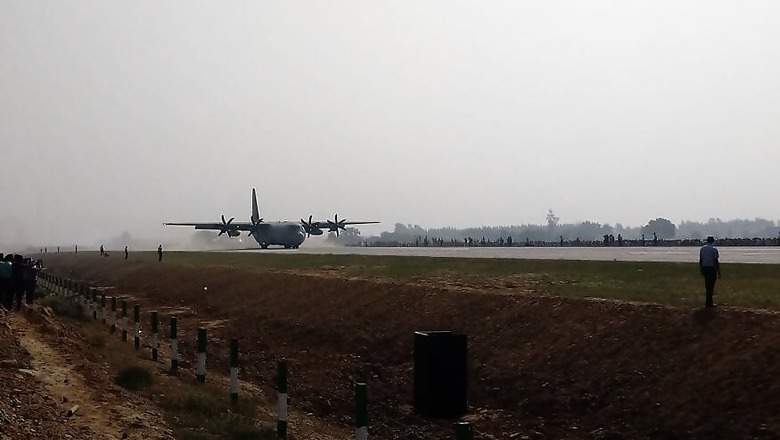
views
The Indian Air Force along with the government is prepping key national highways to use them as runways for fighter and military transport aircrafts. While this certainly speak volumes about the build quality of such highways that can double up as runways when needed, not all roads in India can share the same stature.
Out of 228 National Highways, only 12 of them has been cleared by the Indian Air Force to be used as emergency landing strips for fighter jets. Initially, 21 National Highways were identified, but they are still being tested for operational capabilities.
These emergency airstrips would be used in case of emergencies such as disaster relief, humanitarian assistance, as well as in situations of war or conflict. Three such road runways connect Maoist-affected areas in Odisha, Jharkhand and Chhattisgarh.Also read: Why Indian Air Force Landed About 20 Aircraft on Lucknow-Agra Expressway
In order to use National Highways as airstrips here are some basic build parameters the roads need to meet. At least 3 kilometres of straight road: The concept of using circular runways for airplanes is still in theory. For military planes, runways needs to have at least 3 kilometres of straight road. So, only those National Highways which can offer 3 to 3.5 kilometres of straight uninterrupted sections can be considered to be used as an emergency airstrip. Wide roads: After the straight road section is identified, the government will need to buy land around that the particular highway stretch to ensure that the complete wingspan of the fighters face no barriers of any sought. The Mirage 2000 has a wingspan of 29 feet while the C-130 Hercules has mammoth wingspan of 133 feet. The highways needs to accommodate this wingspan. Typically, commercial aircraft runways are 262 feet in width. Road thickness or strength: Runways are made of asphalt and concrete with the pavement thickness varying between 10 inches and 4 feet. The section of road that will be used as an airstrip needs to specially strengthen with additional tar or concrete. Also, for better maintenance, that area need to be grooved for water drainage during rains. Free of Debris and Obstacle: To convert a highway strip into a runway, at least 24 to 48 hours of prior notice is needed to clear the area of obstacles and debris. CATOBAR system: Going forward in order to convert more highways into airstrips, the possibility of introducing a CATOBAR system can be explored. This can substantially decrease the need to maintain a lengthy straight road section by the use of arrestor wires and catapult assistance like in aircraft carriers. Also, on some important National Highways where finding a long straight section of 3 kilometres is difficult, a CATOBAR system could come handy. Also read: WhatsApp Live Location: Say Hi to This New Feature to Sour Your Relationships12 National Highway airstrips:
1) Jamshedpur-Balasore, Chattarpur-Digha highway in Odisha
2) Kishanganj-Islampur highway in Bihar
3) Delhi-Moradabad highway in Delhi-Uttar Pradesh
4) Bijbehara-Chinar Bagh highway in Jammu and Kashmir
5) Rampur-Kathgodam highway in Uttarakhand
6) Lucknow-Varanasi highway in Uttar Pradesh
7) Dwarka-Maliya highway in Gujarat
8) Kharagpur-Keonjhar highway in West Bengal
9) Mohanbari-Tinsukia highway in Assam
10) Vijaywada-Rajahmundry highway in Andhra Pradesh
11) Chennai-Puducherry highway in Tamil Nadu


















Comments
0 comment